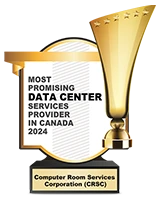Emerging Trends in Data Center Sustainability: The Push for Greener Solutions

The data center industry is experiencing a significant transformation, driven by the need to meet growing demands for digital services while addressing environmental concerns. With global energy consumption by data centers expected to reach new highs, the industry’s focus has shifted towards sustainable and energy-efficient solutions. This article explores recent developments in the push for greener data centers, highlighting key trends and innovations shaping the future.
The Rise of Renewable Energy Integration
A growing number of data centers are transitioning to renewable energy sources to power their operations. Tech giants like Google, Microsoft, and Amazon are leading the charge, committing to 100% renewable energy usage for their data centers. Recent announcements reveal that more companies are signing power purchase agreements (PPAs) with solar and wind energy providers, reducing their carbon footprint and enhancing sustainability. For instance, in July 2024, Equinix announced a landmark deal to source 100% of its European data centers’ energy needs from renewable sources. This move is part of a broader industry trend where data centers are increasingly relying on renewable energy to mitigate their environmental impact.
Innovations in Cooling Technologies
Cooling systems account for a significant portion of data centers’ energy consumption. Recent innovations in cooling technologies are playing a pivotal role in reducing this energy burden. Liquid cooling, for instance, has gained traction as a more efficient alternative to traditional air-cooling systems. Companies like Intel and Nvidia have been investing in liquid cooling solutions, which allow for more effective heat dissipation and lower energy use. Additionally, immersion cooling, where servers are submerged in a thermally conductive liquid, is emerging as a viable solution for high-density computing environments. This method not only improves energy efficiency but also reduces the physical space required for cooling infrastructure, making it an attractive option for data centers aiming to optimize both energy and space utilization.
Advancements in Energy Storage Solutions
To complement the integration of renewable energy, advancements in energy storage solutions are crucial. Battery Energy Storage Systems (BESS) are becoming more sophisticated, offering data centers the ability to store excess renewable energy for use during peak demand periods. In 2024, several data centers began incorporating BESS to enhance energy resilience and reduce reliance on the grid during peak times. Furthermore, the development of green hydrogen as an energy storage medium is gaining attention. While still in the early stages, green hydrogen has the potential to provide long-duration energy storage, enabling data centers to operate entirely off-grid or in locations with unreliable energy supplies.
Edge Data Centers and Sustainability
The growth of edge computing is another significant trend in the data center industry. Edge data centers, which process data closer to the source of generation, reduce latency and improve efficiency. These smaller, localized data centers also contribute to sustainability by reducing the need for extensive data transmission across large distances, which can be energy intensive. Recent developments in 2024 highlight the expansion of edge data centers in urban and remote areas, driven by the increasing demand for real-time data processing in applications such as autonomous vehicles, IoT, and 5G networks. As edge computing continues to grow, so does the emphasis on making these facilities as energy efficient as possible.
Carbon-Neutral Data Centers
The ultimate goal for many in the industry is to achieve carbon neutrality. In 2024, several data center operators have announced plans to become carbon-neutral within the next decade. This ambitious goal involves a combination of renewable energy usage, energy-efficient technologies, and carbon offsetting initiatives. Microsoft, for example, has committed to being carbon negative by 2030, removing more carbon from the environment than it emits. This commitment includes its entire supply chain, data centers, and operations, setting a high standard for the industry.
The data center industry is at a critical juncture, where the demand for digital services is skyrocketing, and the need for sustainable practices is more urgent than ever. The trends and innovations highlighted in this article demonstrate the industry’s commitment to reducing its environmental impact while continuing to support the digital economy. As the push for greener solutions intensifies, the future of data centers will likely be defined by how well they can balance performance with sustainability.



